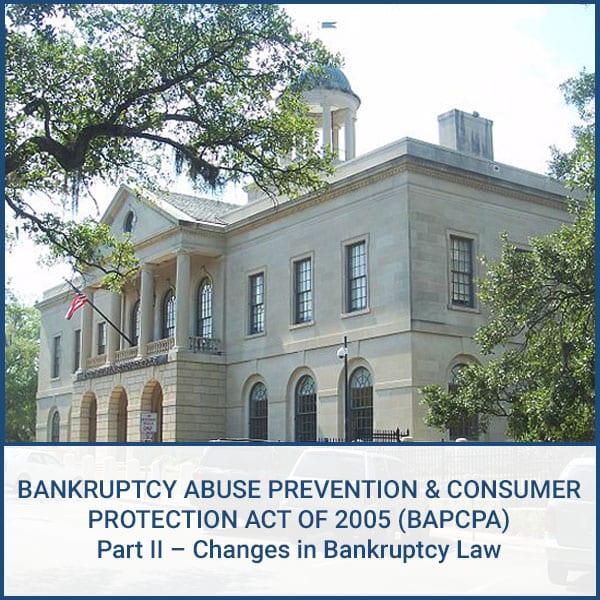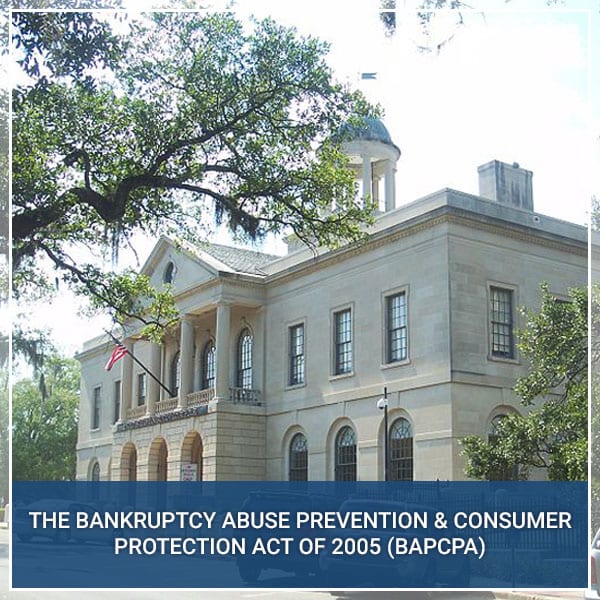Bankruptcy Abuse Prevention & Consumer Protection Act of 2005 (bapcpa) Part Ii
Part II – Changes in Bankruptcy Law [See related articles on this blog: The Bankruptcy Abuse Prevention & Consumer Protection Act (BAPCPA), “Part I, Rationales” &Part III The “Means Test in Bankruptcy”] The enactment of the Bankruptcy Abuse Prevention & Consumer Protection Act (BAPCPA) in April, 2005, wrought significant changes in the law embodied in Chapter 7 of the United States Bankruptcy Code. Changes were also affected in Chapter 13 of the code, but such changes in that section were not as broad or as Read More +



